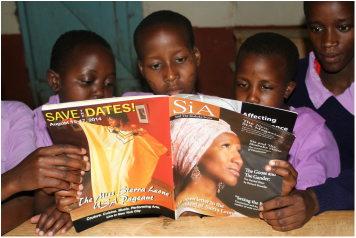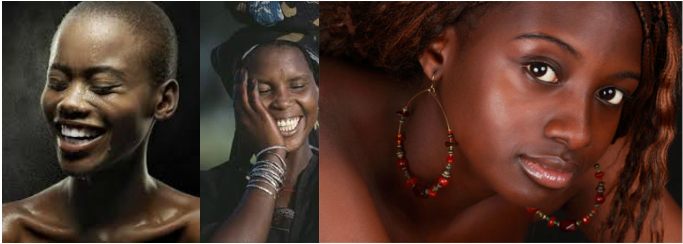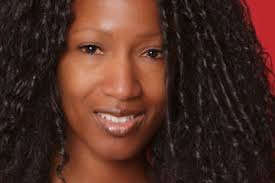1. Scrap the term Female Genital Mutilation (FGM). The fact is the vast majority of women support the varied practices of what I refer to as female circumcision. And, yes, many have seen what "natural" vulvae look like. I believe the term FGM is discriminatory, offensive and an assault against the very basic human rights principle of self-determination - that is the inherent right of practitioners to define their own experiences and bodies in a positive and self-affirming way. The fact that there are uncircumcised women (and even those who are circumcised) who view the practice as mutilation is not sufficient for WHO and other UN partners as well as governments and other official entities to arbitrarily rename the practice against the experiences of the majority of supporters. As for the dubious health claims, these do not reflect the experiences of the vast majority of women who have undergone WHO Types I and II that account for 90% of the procedures in Africa. The fact that the varied procedures are performed mostly on children also does not justify the use of the term mutilation; the issue of consent can be discussed without the moral judgement and condemning tone of FGM (see points two and three). 2. Allow parental discretion for WHO Type I, the removal of the prepuce of the exposed clitoral glans. This is the type of female circumcision that is analogous with male circumcision, which is not only allowed but prescribed by WHO as a preventive of HIV infection in Africa. The fact that opponents believe the female clitoral foreskin is more sensitive or somehow more sacrosanct than male foreskin represents a male bias that cannot be proven scientifically. The argument that removal of foreskin in the male is required for health, hygiene and aesthetics is as subjective and culturally rooted as the arguments in favor of female circumcision for the same reasons. The argument that male circumcision is religiously required is once more an expression of male bias and the privileging of patriarchal Abrahamic religion over the African matriarchal religious systems in ancient Egypt and Nubia among the Nilotic and Mande peoples that predated Judaism, Christianity and Islam. At the end of the day, equality means equality - male dominated religions do not have priority over female dominated religious practices in Africa. And although modern day radical, mainstream and conservative feminists would like to believe otherwise, female foreskin does not hold some intrinsic power or essence over male foreskin; if the latter can be safely removed so can the former. 3. WHO Types II and III, which involve more physically altering procedures should not be permitted on children below the age of majority in the country in question. This, for me is a major compromise but one me and my colleagues believe is a necessary starting point for discussions on global health policies concerning genital operations that ought to apply equally to everyone in the world with no exceptions. Basically, we cannot have a discussion about gender equality and parity in Africa without questioning the patriarchal privileging or male bias in policies concerning male circumcision as compared with the blanket condemnation of the varied practices of female circumcision across the continent. To justify one at the expense of the other is to reproduce the same old, tired, essentializing gender stereotypes that feminism was supposed to have done away with back in the 70s. AWAFC demands equal rights and equal treatment of circumcised women vis a vis uncircumcised adult women and all adult men - circumcised and uncircumcised. If uncircumcised or so-called intact adult women in western countries can opt for all kinds of female genital cosmetic surgeries, much of which are far more invasive than the African procedures, then those of us from societies that value female circumcision expect to exercise the same autonomy over our own genitalia, thank you. If adult western women can take their minor daughters for labiaplasties in the West, then we expect the same privacy and respect in making similar decisions for our underage daughters. If adult men can circumcise their underage sons, then we expect to freely take our minor daughters for comparable procedures. If, on the other hand, other adult men and women in the rest of the world are legally required to refrain from more extensive procedures (than type I) on their children's genitalia, we would not seek special treatment. Moreover, if other adult men and women were completely banned from operating on the genitalia of their minor sons and minor daughters, maybe then, just maybe, we too can come to the negotiation table and discuss a ban on type I for our minors. Whatever the case is, female circumcision and the female centered or matriarchal ideals they represent has been around for thousands of years long before Abrahamic male circumcision and will be around until the end of time. There's no legislation or coercive policy that will stop African women from exercising our fundamental rights to self-determination and celebrating our cherished socio-religious and aesthetic traditions. AWAFC will continue to do our own little bit to help improve the health, social and psychosexual wellbeing of our mothers, sisters and daughters across the Sub-Sahara belt and to ensure that they can stand up for their human rights and rites of passage in this fast changing globalized world. The time has come to end the outdated and bigoted representations of circumcised African women and girls as helpless, mutilated victims of the worst horror facing humanity. *For more background information on WHO Types of FGM/C as well as the most up to date summary on the medical evidence concerning female circumcision, click here for the Public Policy Advisory on Female Genital Surgeries in Africa or view the article on my website. Revised time schedule for BBC Global Questions on BBC World TV:
Editor in Chief, SiA Magazine
Co-Founder, African Women are Free to Choose www.fuambaisiaahmadu.com [email protected]
3 Comments
|
Archives
March 2024
Categories
All
|



 RSS Feed
RSS Feed